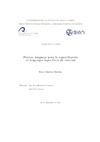Please use this identifier to cite or link to this item:
https://accedacris.ulpgc.es/handle/10553/12763
| DC Field | Value | Language |
|---|---|---|
| dc.contributor.advisor | Hernández Cabrera, José Juan | - |
| dc.contributor.advisor | Évora Gómez, José | - |
| dc.contributor.author | Sánchez Sánchez, Bycor | - |
| dc.contributor.other | Instituto Universitario de Sistemas Inteligentes y Aplicaciones Numéricas en Ingeniería (SIANI) | en_US |
| dc.date.accessioned | 2015-02-07T03:30:16Z | - |
| dc.date.accessioned | 2018-05-15T10:50:18Z | - |
| dc.date.available | 2015-02-07T03:30:16Z | - |
| dc.date.available | 2018-05-15T10:50:18Z | - |
| dc.date.issued | 2014 | en_US |
| dc.identifier.uri | https://accedacris.ulpgc.es/handle/10553/12763 | - |
| dc.description | Máster Universitario en Sistemas Inteligentes y Aplicaciones Numéricas en Ingeniería (SIANI) | en_US |
| dc.description.abstract | En el sector del desarrollo software surge la necesidad de mejorar la productividad y garantizar la evolución flexible del software, de tal forma que el producto satisfaga las necesidades del cliente con el menor coste posible. Model Driven Engineering (MDE) es una metodología que surge con estos objetivos. Para lograrlo, MDE se apoya en el uso de Lenguajes Específicos de Dominio (Domain Specific Language, DSL) para expresar lógicas de negocio con un lenguaje cercano al ámbito de aplicación. El desarrollo de sistemas complejos ha potenciado el uso de MDE en contextos muy diversos. Por tanto, es necesaria la creación de lenguajes específicos para cada contexto. | en_US |
| dc.description.abstract | [EN] In the software development sector emerges the need to improve productivity and ensure flexible software evolution, so that the product meets customer needs at the lowest cost. Model Driven Engineering (MDE) is a methodology that comes with these objectives. To achieve this, MDE relies on the use of Domain Specific Languages (DSL) for expressing business logic with a near scope language. The development of complex systems has enhanced the use of MDE in very different contexts. Therefore, the creation of specific languages for each context is necessary. In this study the hypothesis of the existence of a grammar capable of representing multiple DSLs arises. | en_US |
| dc.format | application/pdf | es |
| dc.language | spa | en_US |
| dc.rights | by-nc-nd | es |
| dc.subject | 33 Ciencias tecnológicas | en_US |
| dc.subject.other | MDE | en_US |
| dc.subject.other | GMDE | en_US |
| dc.subject.other | DSL | en_US |
| dc.subject.other | Proteo | en_US |
| dc.subject.other | Lenguaje | en_US |
| dc.subject.other | Informática | en_US |
| dc.title | Proteo : lenguaje para la especificación de lenguajes específicos de dominio | en_US |
| dc.type | info:eu-repo/semantics/masterThesis | en_US |
| dc.type | MasterThesis | en_US |
| dc.compliance.driver | 1 | es |
| dc.contributor.departamento | Departamento de Iu Sistemas Inteligentes Y Aplicaciones Numéricas | en_US |
| dc.contributor.facultad | Escuela de Ingeniería Informática | en_US |
| dc.identifier.absysnet | 706352 | es |
| dc.identifier.crisid | - | - |
| dc.investigacion | Ingeniería y Arquitectura | en_US |
| dc.rights.accessrights | info:eu-repo/semantics/openAccess | es |
| dc.type2 | Trabajo final de máster | en_US |
| dc.utils.revision | Sí | en_US |
| dc.identifier.matricula | TFT-33826 | es |
| dc.identifier.ulpgc | Sí | en_US |
| dc.contributor.buulpgc | BU-INF | en_US |
| dc.contributor.titulacion | Máster Universitario en Sistemas Inteligentes y Aplicaciones Numéricas en Ingeniería | es |
| item.grantfulltext | open | - |
| item.fulltext | Con texto completo | - |
| crisitem.advisor.dept | GIR SIANI: Inteligencia Artificial, Redes Neuronales, Aprendizaje Automático e Ingeniería de Datos | - |
| crisitem.advisor.dept | IU Sistemas Inteligentes y Aplicaciones Numéricas | - |
| crisitem.advisor.dept | Departamento de Informática y Sistemas | - |
| crisitem.advisor.dept | GIR SIANI: Inteligencia Artificial, Redes Neuronales, Aprendizaje Automático e Ingeniería de Datos | - |
| crisitem.advisor.dept | IU Sistemas Inteligentes y Aplicaciones Numéricas | - |
| crisitem.advisor.dept | Departamento de Informática y Sistemas | - |
| Appears in Collections: | Trabajo final de máster | |
Page view(s)
197
checked on May 17, 2025
Download(s)
198
checked on May 17, 2025
Google ScholarTM
Check
Share
Export metadata
Items in accedaCRIS are protected by copyright, with all rights reserved, unless otherwise indicated.
